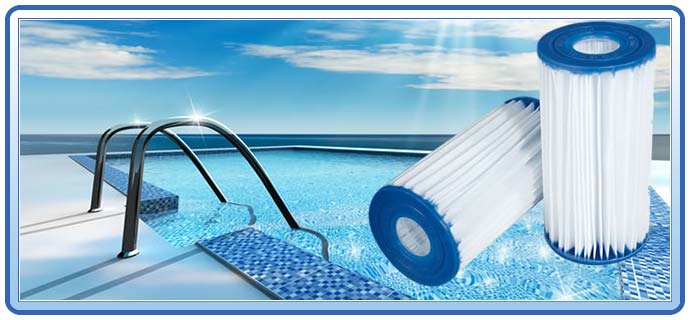There are different kinds of swimming pool filter for your pool, and the ideal one depends on your preference, the pool’s location, and the type of pool that you have. Some filters are more suitable for pools that are located in open areas that get a lot of dust and dirt or where there is a lot of leaves and debris.
There are three basic choices for filters: cartridge, sand and semiautomatics earth filter systems. Every type of pool filter has its unique benefits and drawbacks.
Sand filters are very popular because they are durable, easy to use and inexpensive. Water from the pool is pulled in through the top of the filter and pushed through a bed of sand within the filter. The sand filters out the contaminants and clean water is pushed back into the pool through the bottom of the filter. Water flow decreases as the filter continues to remove debris from the water and the sand becomes plugged with debris. The filter can be easily cleaned by “back washing” or reversing the water flow through the pump via a backwash valve. The sand can be replaced if the filter becomes too dirty. One of the drawbacks to sand filters is that some particles might not be filtered and will remain in the swimming pool water. These filters are capable of filtering down to 20-25 microns. Sand filters require weekly back washing for optimal efficiency. Back washing is not permitted in some locales, and are the least energy efficient type of filter.
Cartridge filters are smaller, more affordable and more energy efficient than sand filters. Water is filtered through the paper-like surface of the filter which traps dirt and debris from the pool and filtered water is returned to the pool. Cartridge filters run at a lower pressure and require less water for operation than sand filters, so less pressure is required from the pump. Cleaning the filter generally requires spraying with a hose, and no back washing is needed. Cartridge filters are capable of filtering particles down to 5 microns.
D.E. filters or semiautomatics earth filters use mined fossilized exoskeletons of tiny diatoms to coat the grids in the filter and filter out debris and other impurities from the water. The grids inside the D.E. filter tank with are coated with D.E. Powder that acts like sand to filter small particles from the water. DE filters can filter particles that are as small as 3 microns. Similar to sand filters, when the pressure in the filter rises, it becomes less efficient and requires back washing and replacing of the D.E. powder through a slurry into the skimmer. These filters can make the water clearer, but they are more expensive and need more upkeep than sand or cartridge filters, because the D.E. powder must be replaced every time the filter is back washed. These filters also run at a higher pressure than cartridge filters. D.E. filters must be cleaned thoroughly at least once a year.

No comments:
Post a Comment